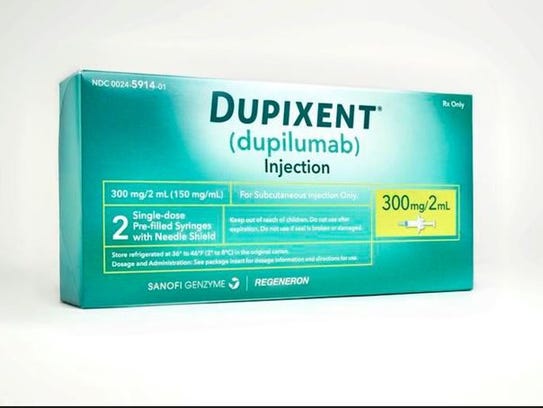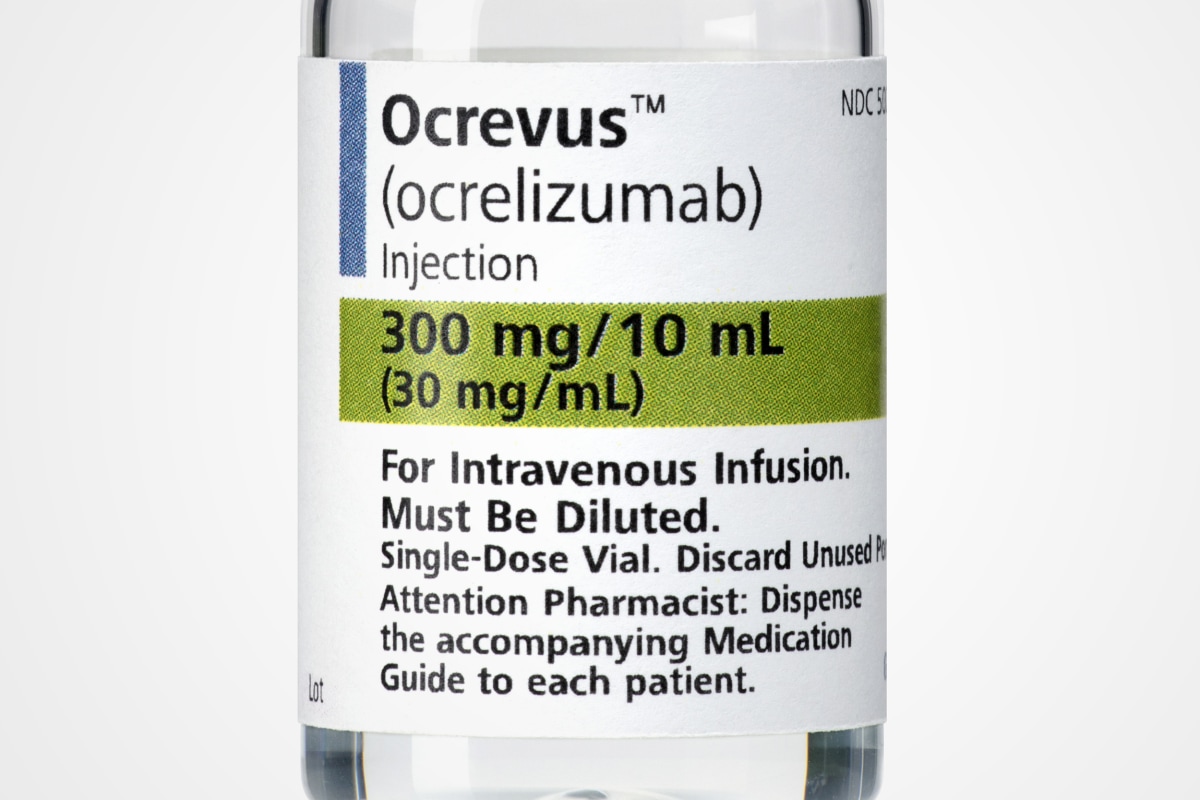FDA Approvals & Classification: ZEJULA, DUPIXENT, OCREVUS, BRAIN SENTINEL
FDA BRIEF: Week of March 27, 2017


ZEJULA (niraparib) capsules
Tesaro, Waltham, MA, USA
INDICATION: Maintenance treatment of adult patients with recurrent epithelial ovarian, fallopian tube, or primary peritoneal cancer who are in a complete or partial response to platinum-based chemotherapy
ADDRESSING UNMET NEED:
- >2,000 women will be diagnosed in 2017; >14,000 will die
- Maintenance therapy important for patients with positive response
- ZEJULA offers new treatment option to delay growth regardless of genetic mutation
REG PATHWAY: NDA
- Fast Track, Priority Review and Breakthrough Therapy designation
- Orphan Drug designation for treating recurrent epithelial ovarian cancer.
- Application approved approximately three months ahead of the goal date
- Postmarketing Requirement: PK trial in patients with moderate hepatic impairment
MECHANISM OF ACTION: Inhibitor of poly(ADP-ribose) polymerase (PARP) enzymes, PARP-1 and PARP-2, which play a role in DNA repair
EFFICACY:
- Single double-blind, placebo-controlled trial, n=553, patients with platinumsensitive recurrent epithelial ovarian, fallopian tube, or primary peritoneal cancer. Patients with deleterious or suspected deleterious germline BRCA mutations (gBRCAm) were assigned to the germline BRCA mutated (gBRCAmut) cohort (n=203), and those without germline BRCA mutations were assigned to the non-gBRCAmut cohort (n=350)., ZEJULA vs. placebo
- Primary efficacy outcome: PFS (progression-free survival) determined by RECIST
- gBRCAmut cohort: 21 mo. vs 5.5 mo. (p<0.0001)
- non-gBRCAmut cohort: 9.3 mo. vs 3.9 mo. (p<0.0001)
SAFETY:
- Common adverse reactions: Thrombocytopenia, anemia, neutropenia, leukopenia, palpitations, nausea, constipation, vomiting, abdominal pain/distention, mucositis/stomatitis, diarrhea, dyspepsia, dry mouth, fatigue, decreased appetite, urinary tract infection, AST/ALT elevation, myalgia, back pain, arthralgia, headache, dizziness, dysgeusia, insomnia, anxiety, nasopharyngitis, dyspnea, cough, rash, and hypertension.

DUPIXENT (dupilumab) injection
Regeneron Pharmaceuticals, Tarrytown, NY, USA
INDICATION: Treatment of adult patients with moderate-to-severe atopic dermatitis whose disease is not adequately controlled with topical prescription therapies or when those therapies are not advisable. DUPIXENT can be used with or without topical corticosteroids
ADDRESSING UNMET NEED:
- Atopic dermatitis most common of the many types of eczema; onset in childhood and can last through adulthood
- New and innovative therapy for skin disease not controlled by topical therapies
REG PATHWAY: BLA
- Priority Review, Breakthrough Therapy designation
- Postmarketing requirements: Pediatric studies, Registry-based observational study on maternal, fetal, and infant outcomes, Retrospective cohort study on pregnancy outcomes
MECHANISM OF ACTION: Human monoclonal IgG4 antibody, inhibits interleukin-4 (IL-4) and interleukin-13 (IL-13), inhibits cytokine-induced responses, including the release of proinflammatory cytokines, chemokines and IgE
EFFICACY:
- 3 randomized, double-blind, placebo-controlled trials, n=2,119 , patients with moderate-to-severe atopic dermatitis, DUPIXENT or placebo for 16 weeks
- Primary endpoint: Change from baseline and at least a 2-point improvement
- Other endpoints: Eczema Area and Severity Index, itch reduction, improvement in pruritus
- Greater response of clear or almost clear skin, itch reduction
- Serious allergic reactions and eye problems- conjunctivitis, keratitis
- Most common side effects: Injection site reactions; cold sores, eye and eyelid inflammation

OCREVUS (ocrelizumab) intravenous infusion
Genentech, Member of Roche Group, San Francisco, CA, USA
INDICATION: Treatment of adult patients with relapsing or primary progressive forms of multiple sclerosis (PPMS)
ADDRESSING UNMET NEED:
- MS most common causes of neurological disability in young adults and occurs more frequently in women than men
- Approximately 15 percent of patients with MS have PPMS
- OCREVUS first approved drug for PPMS
REG PATHWAY: BLA
- Breakthrough Therapy Designation, Fast Track Designation, Priority Review
- Postmarketing requirements: Pediatric study, Longitudinal observational study in adult patients for breast cancer incidence, prospective pregnancy exposure registry, pre-and postnatal development study in primates
MECHANISM OF ACTION: Binding to CD20, resulting in antibody-dependent cellular cytolysis and complement-mediated lysis
EFFICACY:
- 2 studies, n= 1,656, treated for 96 weeks; OCREVUS vs. Rebif (interferon beta-1a)
- Primary outcome: Annualized relapse rate (ARR)
- Additional outcomes: Confirmed disability progression, new gadolinium (Gd)-enhancing lesions, new or enlarging MRI T2 hyperintense lesions
- Significantly lowered ARR and tdisability progression
- 1 randomized, double-blind, placebo-controlled clinical trial in PPMS,n=488
- Primary outcome: Onset of disability progression
- Onset of disability progression significantly longer for OCREVUS vs. placebo
- Should not be used in patients with hepatitis B infection
- Must be dispensed with patient Medication Guide
- Can cause serious infusion-related reactions, which can be serious
- May increase the risk for malignancies, particularly breast cancer
- Most common side effect: Upper respiratory tract infection, skin infection, and lower respiratory tract infection


Brain Sentinel Monitoring and Alerting System
Brain Sentinel, San Antonio, TX, USA
INDICATION FOR USE: Adjunct to seizure monitoring in adults in the home or healthcare facilities during periods of rest.
The device is to be used on the belly of the biceps muscle to analyze surface electromyographs (sEMG) signals that may be associated with generalized tonic-clonic (GTC) seizures and to provide an alarm to alert caregivers of unilateral, appendicular, tonic extension that could be associated with a GTC seizure.
The System records and stores sEMG data for subsequent review by a trained healthcare professional
REG PATHWAY: De Novo request
- Regulation Number: 21 CFR 882.1580
- Regulation Name: Non-EEG physiological signal based seizure monitoring system
- Regulatory Classification: Class II
- Product Code: POS
GENERIC DEVICE DESCRIPTION: Non-invasive prescription device that collects physiological signals other than EEG to identify physiological signals that may be associated with a seizure
RISKS & MITIGATIONS:
- Adverse tissue reaction: Biocompatibility evaluation
- Equipment malfunction leading to injury to users (shock, burn): Electrical safety, thermal, and mechanical testing, Electromagnetic compatibility testing, Labeling
- Interference with or from other electrical devices: Electromagnetic compatibility testing
- Incorrect alerts, including missing a seizure or false alarm: Clinical performance testing, Non-clinical performance testing, Software verification, validation and hazard analysis, Labeling, Training